-
EXECUTIVE SUMMARY
-
Market Overview
-
Key Findings
-
Market Segmentation
-
Competitive Landscape
-
Challenges and Opportunities
-
Future Outlook
-
MARKET INTRODUCTION
-
Definition
-
Scope of the study
-
Research Objective
-
Assumption
-
Limitations
-
RESEARCH METHODOLOGY
-
Overview
-
Data Mining
-
Secondary Research
-
Primary Research
-
Primary Interviews and Information Gathering Process
-
Breakdown of Primary Respondents
-
Forecasting Model
-
Market Size Estimation
-
Bottom-Up Approach
-
Top-Down Approach
-
Data Triangulation
-
Validation
-
MARKET DYNAMICS
-
Overview
-
Drivers
-
Restraints
-
Opportunities
-
MARKET FACTOR ANALYSIS
-
Value chain Analysis
-
Porter's Five Forces Analysis
-
Bargaining Power of Suppliers
-
Bargaining Power of Buyers
-
Threat of New Entrants
-
Threat of Substitutes
-
Intensity of Rivalry
-
COVID-19 Impact Analysis
-
Market Impact Analysis
-
Regional Impact
-
Opportunity and Threat Analysis
-
Optical Imaging Market, BY Imaging Technique (USD Billion)
-
Fluorescence Imaging
-
Phase Contrast Imaging
-
Near-Infrared Imaging
-
Optical Coherence Tomography
-
Diffuse Optical Imaging
-
Optical Imaging Market, BY Application (USD Billion)
-
Diagnostics
-
Therapeutic Guidance
-
Surgical Planning
-
Research Development
-
Preclinical Imaging
-
Optical Imaging Market, BY End User (USD Billion)
-
Hospitals
-
Research Laboratories
-
Academic Institutions
-
Diagnostic Centers
-
Optical Imaging Market, BY Product Type (USD Billion)
-
Imaging Systems
-
Imaging Software
-
Accessories
-
Optical Imaging Market, BY Regional (USD Billion)
-
North America
-
US
-
Canada
-
Europe
-
Germany
-
UK
-
France
-
Russia
-
Italy
-
Spain
-
Rest of Europe
-
APAC
-
China
-
India
-
Japan
-
South Korea
-
Malaysia
-
Thailand
-
Indonesia
-
Rest of APAC
-
South America
-
Brazil
-
Mexico
-
Argentina
-
Rest of South America
-
MEA
-
GCC Countries
-
South Africa
-
Rest of MEA
-
Competitive Landscape
-
Overview
-
Competitive Analysis
-
Market share Analysis
-
Major Growth Strategy in the Optical Imaging Market
-
Competitive Benchmarking
-
Leading Players in Terms of Number of Developments in the Optical Imaging Market
-
Key developments and growth strategies
-
New Product Launch/Service Deployment
-
Merger Acquisitions
-
Joint Ventures
-
Major Players Financial Matrix
-
Sales and Operating Income
-
Major Players RD Expenditure. 2023
-
Company Profiles
-
Thorlabs Inc.
-
Financial Overview
-
Products Offered
-
Key Developments
-
SWOT Analysis
-
Key Strategies
-
Molecular Devices LLC
-
Financial Overview
-
Products Offered
-
Key Developments
-
SWOT Analysis
-
Key Strategies
-
Hamamatsu Photonics K.K.
-
Financial Overview
-
Products Offered
-
Key Developments
-
SWOT Analysis
-
Key Strategies
-
Fujifilm Holdings Corporation
-
Financial Overview
-
Products Offered
-
Key Developments
-
SWOT Analysis
-
Key Strategies
-
Becton Dickinson and Company
-
Financial Overview
-
Products Offered
-
Key Developments
-
SWOT Analysis
-
Key Strategies
-
Carl Zeiss AG
-
Financial Overview
-
Products Offered
-
Key Developments
-
SWOT Analysis
-
Key Strategies
-
Keyence Corporation
-
Financial Overview
-
Products Offered
-
Key Developments
-
SWOT Analysis
-
Key Strategies
-
Agilent Technologies Inc.
-
Financial Overview
-
Products Offered
-
Key Developments
-
SWOT Analysis
-
Key Strategies
-
Thermo Fisher Scientific Inc.
-
Financial Overview
-
Products Offered
-
Key Developments
-
SWOT Analysis
-
Key Strategies
-
PerkinElmer Inc.
-
Financial Overview
-
Products Offered
-
Key Developments
-
SWOT Analysis
-
Key Strategies
-
Nikon Corporation
-
Financial Overview
-
Products Offered
-
Key Developments
-
SWOT Analysis
-
Key Strategies
-
Leica Microsystems
-
Financial Overview
-
Products Offered
-
Key Developments
-
SWOT Analysis
-
Key Strategies
-
Olympus Corporation
-
Financial Overview
-
Products Offered
-
Key Developments
-
SWOT Analysis
-
Key Strategies
-
Bruker Corporation
-
Financial Overview
-
Products Offered
-
Key Developments
-
SWOT Analysis
-
Key Strategies
-
Xenics NV
-
Financial Overview
-
Products Offered
-
Key Developments
-
SWOT Analysis
-
Key Strategies
-
Appendix
-
References
-
Related Reports
-
LIST Of tables
-
LIST OF ASSUMPTIONS
-
North America Optical Imaging Market SIZE ESTIMATES & FORECAST, BY IMAGING TECHNIQUE, 2019-2035 (USD Billions)
-
North America Optical Imaging Market SIZE ESTIMATES & FORECAST, BY APPLICATION, 2019-2035 (USD Billions)
-
North America Optical Imaging Market SIZE ESTIMATES & FORECAST, BY END USER, 2019-2035 (USD Billions)
-
North America Optical Imaging Market SIZE ESTIMATES & FORECAST, BY PRODUCT TYPE, 2019-2035 (USD Billions)
-
North America Optical Imaging Market SIZE ESTIMATES & FORECAST, BY REGIONAL, 2019-2035 (USD Billions)
-
US Optical Imaging Market SIZE ESTIMATES & FORECAST, BY IMAGING TECHNIQUE, 2019-2035 (USD Billions)
-
US Optical Imaging Market SIZE ESTIMATES & FORECAST, BY APPLICATION, 2019-2035 (USD Billions)
-
US Optical Imaging Market SIZE ESTIMATES & FORECAST, BY END USER, 2019-2035 (USD Billions)
-
US Optical Imaging Market SIZE ESTIMATES & FORECAST, BY PRODUCT TYPE, 2019-2035 (USD Billions)
-
US Optical Imaging Market SIZE ESTIMATES & FORECAST, BY REGIONAL, 2019-2035 (USD Billions)
-
Canada Optical Imaging Market SIZE ESTIMATES & FORECAST, BY IMAGING TECHNIQUE, 2019-2035 (USD Billions)
-
Canada Optical Imaging Market SIZE ESTIMATES & FORECAST, BY APPLICATION, 2019-2035 (USD Billions)
-
Canada Optical Imaging Market SIZE ESTIMATES & FORECAST, BY END USER, 2019-2035 (USD Billions)
-
Canada Optical Imaging Market SIZE ESTIMATES & FORECAST, BY PRODUCT TYPE, 2019-2035 (USD Billions)
-
Canada Optical Imaging Market SIZE ESTIMATES & FORECAST, BY REGIONAL, 2019-2035 (USD Billions)
-
Europe Optical Imaging Market SIZE ESTIMATES & FORECAST, BY IMAGING TECHNIQUE, 2019-2035 (USD Billions)
-
Europe Optical Imaging Market SIZE ESTIMATES & FORECAST, BY APPLICATION, 2019-2035 (USD Billions)
-
Europe Optical Imaging Market SIZE ESTIMATES & FORECAST, BY END USER, 2019-2035 (USD Billions)
-
Europe Optical Imaging Market SIZE ESTIMATES & FORECAST, BY PRODUCT TYPE, 2019-2035 (USD Billions)
-
Europe Optical Imaging Market SIZE ESTIMATES & FORECAST, BY REGIONAL, 2019-2035 (USD Billions)
-
Germany Optical Imaging Market SIZE ESTIMATES & FORECAST, BY IMAGING TECHNIQUE, 2019-2035 (USD Billions)
-
Germany Optical Imaging Market SIZE ESTIMATES & FORECAST, BY APPLICATION, 2019-2035 (USD Billions)
-
Germany Optical Imaging Market SIZE ESTIMATES & FORECAST, BY END USER, 2019-2035 (USD Billions)
-
Germany Optical Imaging Market SIZE ESTIMATES & FORECAST, BY PRODUCT TYPE, 2019-2035 (USD Billions)
-
Germany Optical Imaging Market SIZE ESTIMATES & FORECAST, BY REGIONAL, 2019-2035 (USD Billions)
-
UK Optical Imaging Market SIZE ESTIMATES & FORECAST, BY IMAGING TECHNIQUE, 2019-2035 (USD Billions)
-
UK Optical Imaging Market SIZE ESTIMATES & FORECAST, BY APPLICATION, 2019-2035 (USD Billions)
-
UK Optical Imaging Market SIZE ESTIMATES & FORECAST, BY END USER, 2019-2035 (USD Billions)
-
UK Optical Imaging Market SIZE ESTIMATES & FORECAST, BY PRODUCT TYPE, 2019-2035 (USD Billions)
-
UK Optical Imaging Market SIZE ESTIMATES & FORECAST, BY REGIONAL, 2019-2035 (USD Billions)
-
France Optical Imaging Market SIZE ESTIMATES & FORECAST, BY IMAGING TECHNIQUE, 2019-2035 (USD Billions)
-
France Optical Imaging Market SIZE ESTIMATES & FORECAST, BY APPLICATION, 2019-2035 (USD Billions)
-
France Optical Imaging Market SIZE ESTIMATES & FORECAST, BY END USER, 2019-2035 (USD Billions)
-
France Optical Imaging Market SIZE ESTIMATES & FORECAST, BY PRODUCT TYPE, 2019-2035 (USD Billions)
-
France Optical Imaging Market SIZE ESTIMATES & FORECAST, BY REGIONAL, 2019-2035 (USD Billions)
-
Russia Optical Imaging Market SIZE ESTIMATES & FORECAST, BY IMAGING TECHNIQUE, 2019-2035 (USD Billions)
-
Russia Optical Imaging Market SIZE ESTIMATES & FORECAST, BY APPLICATION, 2019-2035 (USD Billions)
-
Russia Optical Imaging Market SIZE ESTIMATES & FORECAST, BY END USER, 2019-2035 (USD Billions)
-
Russia Optical Imaging Market SIZE ESTIMATES & FORECAST, BY PRODUCT TYPE, 2019-2035 (USD Billions)
-
Russia Optical Imaging Market SIZE ESTIMATES & FORECAST, BY REGIONAL, 2019-2035 (USD Billions)
-
Italy Optical Imaging Market SIZE ESTIMATES & FORECAST, BY IMAGING TECHNIQUE, 2019-2035 (USD Billions)
-
Italy Optical Imaging Market SIZE ESTIMATES & FORECAST, BY APPLICATION, 2019-2035 (USD Billions)
-
Italy Optical Imaging Market SIZE ESTIMATES & FORECAST, BY END USER, 2019-2035 (USD Billions)
-
Italy Optical Imaging Market SIZE ESTIMATES & FORECAST, BY PRODUCT TYPE, 2019-2035 (USD Billions)
-
Italy Optical Imaging Market SIZE ESTIMATES & FORECAST, BY REGIONAL, 2019-2035 (USD Billions)
-
Spain Optical Imaging Market SIZE ESTIMATES & FORECAST, BY IMAGING TECHNIQUE, 2019-2035 (USD Billions)
-
Spain Optical Imaging Market SIZE ESTIMATES & FORECAST, BY APPLICATION, 2019-2035 (USD Billions)
-
Spain Optical Imaging Market SIZE ESTIMATES & FORECAST, BY END USER, 2019-2035 (USD Billions)
-
Spain Optical Imaging Market SIZE ESTIMATES & FORECAST, BY PRODUCT TYPE, 2019-2035 (USD Billions)
-
Spain Optical Imaging Market SIZE ESTIMATES & FORECAST, BY REGIONAL, 2019-2035 (USD Billions)
-
Rest of Europe Optical Imaging Market SIZE ESTIMATES & FORECAST, BY IMAGING TECHNIQUE, 2019-2035 (USD Billions)
-
Rest of Europe Optical Imaging Market SIZE ESTIMATES & FORECAST, BY APPLICATION, 2019-2035 (USD Billions)
-
Rest of Europe Optical Imaging Market SIZE ESTIMATES & FORECAST, BY END USER, 2019-2035 (USD Billions)
-
Rest of Europe Optical Imaging Market SIZE ESTIMATES & FORECAST, BY PRODUCT TYPE, 2019-2035 (USD Billions)
-
Rest of Europe Optical Imaging Market SIZE ESTIMATES & FORECAST, BY REGIONAL, 2019-2035 (USD Billions)
-
APAC Optical Imaging Market SIZE ESTIMATES & FORECAST, BY IMAGING TECHNIQUE, 2019-2035 (USD Billions)
-
APAC Optical Imaging Market SIZE ESTIMATES & FORECAST, BY APPLICATION, 2019-2035 (USD Billions)
-
APAC Optical Imaging Market SIZE ESTIMATES & FORECAST, BY END USER, 2019-2035 (USD Billions)
-
APAC Optical Imaging Market SIZE ESTIMATES & FORECAST, BY PRODUCT TYPE, 2019-2035 (USD Billions)
-
APAC Optical Imaging Market SIZE ESTIMATES & FORECAST, BY REGIONAL, 2019-2035 (USD Billions)
-
China Optical Imaging Market SIZE ESTIMATES & FORECAST, BY IMAGING TECHNIQUE, 2019-2035 (USD Billions)
-
China Optical Imaging Market SIZE ESTIMATES & FORECAST, BY APPLICATION, 2019-2035 (USD Billions)
-
China Optical Imaging Market SIZE ESTIMATES & FORECAST, BY END USER, 2019-2035 (USD Billions)
-
China Optical Imaging Market SIZE ESTIMATES & FORECAST, BY PRODUCT TYPE, 2019-2035 (USD Billions)
-
China Optical Imaging Market SIZE ESTIMATES & FORECAST, BY REGIONAL, 2019-2035 (USD Billions)
-
India Optical Imaging Market SIZE ESTIMATES & FORECAST, BY IMAGING TECHNIQUE, 2019-2035 (USD Billions)
-
India Optical Imaging Market SIZE ESTIMATES & FORECAST, BY APPLICATION, 2019-2035 (USD Billions)
-
India Optical Imaging Market SIZE ESTIMATES & FORECAST, BY END USER, 2019-2035 (USD Billions)
-
India Optical Imaging Market SIZE ESTIMATES & FORECAST, BY PRODUCT TYPE, 2019-2035 (USD Billions)
-
India Optical Imaging Market SIZE ESTIMATES & FORECAST, BY REGIONAL, 2019-2035 (USD Billions)
-
Japan Optical Imaging Market SIZE ESTIMATES & FORECAST, BY IMAGING TECHNIQUE, 2019-2035 (USD Billions)
-
Japan Optical Imaging Market SIZE ESTIMATES & FORECAST, BY APPLICATION, 2019-2035 (USD Billions)
-
Japan Optical Imaging Market SIZE ESTIMATES & FORECAST, BY END USER, 2019-2035 (USD Billions)
-
Japan Optical Imaging Market SIZE ESTIMATES & FORECAST, BY PRODUCT TYPE, 2019-2035 (USD Billions)
-
Japan Optical Imaging Market SIZE ESTIMATES & FORECAST, BY REGIONAL, 2019-2035 (USD Billions)
-
South Korea Optical Imaging Market SIZE ESTIMATES & FORECAST, BY IMAGING TECHNIQUE, 2019-2035 (USD Billions)
-
South Korea Optical Imaging Market SIZE ESTIMATES & FORECAST, BY APPLICATION, 2019-2035 (USD Billions)
-
South Korea Optical Imaging Market SIZE ESTIMATES & FORECAST, BY END USER, 2019-2035 (USD Billions)
-
South Korea Optical Imaging Market SIZE ESTIMATES & FORECAST, BY PRODUCT TYPE, 2019-2035 (USD Billions)
-
South Korea Optical Imaging Market SIZE ESTIMATES & FORECAST, BY REGIONAL, 2019-2035 (USD Billions)
-
Malaysia Optical Imaging Market SIZE ESTIMATES & FORECAST, BY IMAGING TECHNIQUE, 2019-2035 (USD Billions)
-
Malaysia Optical Imaging Market SIZE ESTIMATES & FORECAST, BY APPLICATION, 2019-2035 (USD Billions)
-
Malaysia Optical Imaging Market SIZE ESTIMATES & FORECAST, BY END USER, 2019-2035 (USD Billions)
-
Malaysia Optical Imaging Market SIZE ESTIMATES & FORECAST, BY PRODUCT TYPE, 2019-2035 (USD Billions)
-
Malaysia Optical Imaging Market SIZE ESTIMATES & FORECAST, BY REGIONAL, 2019-2035 (USD Billions)
-
Thailand Optical Imaging Market SIZE ESTIMATES & FORECAST, BY IMAGING TECHNIQUE, 2019-2035 (USD Billions)
-
Thailand Optical Imaging Market SIZE ESTIMATES & FORECAST, BY APPLICATION, 2019-2035 (USD Billions)
-
Thailand Optical Imaging Market SIZE ESTIMATES & FORECAST, BY END USER, 2019-2035 (USD Billions)
-
Thailand Optical Imaging Market SIZE ESTIMATES & FORECAST, BY PRODUCT TYPE, 2019-2035 (USD Billions)
-
Thailand Optical Imaging Market SIZE ESTIMATES & FORECAST, BY REGIONAL, 2019-2035 (USD Billions)
-
Indonesia Optical Imaging Market SIZE ESTIMATES & FORECAST, BY IMAGING TECHNIQUE, 2019-2035 (USD Billions)
-
Indonesia Optical Imaging Market SIZE ESTIMATES & FORECAST, BY APPLICATION, 2019-2035 (USD Billions)
-
Indonesia Optical Imaging Market SIZE ESTIMATES & FORECAST, BY END USER, 2019-2035 (USD Billions)
-
Indonesia Optical Imaging Market SIZE ESTIMATES & FORECAST, BY PRODUCT TYPE, 2019-2035 (USD Billions)
-
Indonesia Optical Imaging Market SIZE ESTIMATES & FORECAST, BY REGIONAL, 2019-2035 (USD Billions)
-
Rest of APAC Optical Imaging Market SIZE ESTIMATES & FORECAST, BY IMAGING TECHNIQUE, 2019-2035 (USD Billions)
-
Rest of APAC Optical Imaging Market SIZE ESTIMATES & FORECAST, BY APPLICATION, 2019-2035 (USD Billions)
-
Rest of APAC Optical Imaging Market SIZE ESTIMATES & FORECAST, BY END USER, 2019-2035 (USD Billions)
-
Rest of APAC Optical Imaging Market SIZE ESTIMATES & FORECAST, BY PRODUCT TYPE, 2019-2035 (USD Billions)
-
Rest of APAC Optical Imaging Market SIZE ESTIMATES & FORECAST, BY REGIONAL, 2019-2035 (USD Billions)
-
South America Optical Imaging Market SIZE ESTIMATES & FORECAST, BY IMAGING TECHNIQUE, 2019-2035 (USD Billions)
-
South America Optical Imaging Market SIZE ESTIMATES & FORECAST, BY APPLICATION, 2019-2035 (USD Billions)
-
South America Optical Imaging Market SIZE ESTIMATES & FORECAST, BY END USER, 2019-2035 (USD Billions)
-
South America Optical Imaging Market SIZE ESTIMATES & FORECAST, BY PRODUCT TYPE, 2019-2035 (USD Billions)
-
South America Optical Imaging Market SIZE ESTIMATES & FORECAST, BY REGIONAL, 2019-2035 (USD Billions)
-
Brazil Optical Imaging Market SIZE ESTIMATES & FORECAST, BY IMAGING TECHNIQUE, 2019-2035 (USD Billions)
-
Brazil Optical Imaging Market SIZE ESTIMATES & FORECAST, BY APPLICATION, 2019-2035 (USD Billions)
-
Brazil Optical Imaging Market SIZE ESTIMATES & FORECAST, BY END USER, 2019-2035 (USD Billions)
-
Brazil Optical Imaging Market SIZE ESTIMATES & FORECAST, BY PRODUCT TYPE, 2019-2035 (USD Billions)
-
Brazil Optical Imaging Market SIZE ESTIMATES & FORECAST, BY REGIONAL, 2019-2035 (USD Billions)
-
Mexico Optical Imaging Market SIZE ESTIMATES & FORECAST, BY IMAGING TECHNIQUE, 2019-2035 (USD Billions)
-
Mexico Optical Imaging Market SIZE ESTIMATES & FORECAST, BY APPLICATION, 2019-2035 (USD Billions)
-
Mexico Optical Imaging Market SIZE ESTIMATES & FORECAST, BY END USER, 2019-2035 (USD Billions)
-
Mexico Optical Imaging Market SIZE ESTIMATES & FORECAST, BY PRODUCT TYPE, 2019-2035 (USD Billions)
-
Mexico Optical Imaging Market SIZE ESTIMATES & FORECAST, BY REGIONAL, 2019-2035 (USD Billions)
-
Argentina Optical Imaging Market SIZE ESTIMATES & FORECAST, BY IMAGING TECHNIQUE, 2019-2035 (USD Billions)
-
Argentina Optical Imaging Market SIZE ESTIMATES & FORECAST, BY APPLICATION, 2019-2035 (USD Billions)
-
Argentina Optical Imaging Market SIZE ESTIMATES & FORECAST, BY END USER, 2019-2035 (USD Billions)
-
Argentina Optical Imaging Market SIZE ESTIMATES & FORECAST, BY PRODUCT TYPE, 2019-2035 (USD Billions)
-
Argentina Optical Imaging Market SIZE ESTIMATES & FORECAST, BY REGIONAL, 2019-2035 (USD Billions)
-
Rest of South America Optical Imaging Market SIZE ESTIMATES & FORECAST, BY IMAGING TECHNIQUE, 2019-2035 (USD Billions)
-
Rest of South America Optical Imaging Market SIZE ESTIMATES & FORECAST, BY APPLICATION, 2019-2035 (USD Billions)
-
Rest of South America Optical Imaging Market SIZE ESTIMATES & FORECAST, BY END USER, 2019-2035 (USD Billions)
-
Rest of South America Optical Imaging Market SIZE ESTIMATES & FORECAST, BY PRODUCT TYPE, 2019-2035 (USD Billions)
-
Rest of South America Optical Imaging Market SIZE ESTIMATES & FORECAST, BY REGIONAL, 2019-2035 (USD Billions)
-
MEA Optical Imaging Market SIZE ESTIMATES & FORECAST, BY IMAGING TECHNIQUE, 2019-2035 (USD Billions)
-
MEA Optical Imaging Market SIZE ESTIMATES & FORECAST, BY APPLICATION, 2019-2035 (USD Billions)
-
MEA Optical Imaging Market SIZE ESTIMATES & FORECAST, BY END USER, 2019-2035 (USD Billions)
-
MEA Optical Imaging Market SIZE ESTIMATES & FORECAST, BY PRODUCT TYPE, 2019-2035 (USD Billions)
-
MEA Optical Imaging Market SIZE ESTIMATES & FORECAST, BY REGIONAL, 2019-2035 (USD Billions)
-
GCC Countries Optical Imaging Market SIZE ESTIMATES & FORECAST, BY IMAGING TECHNIQUE, 2019-2035 (USD Billions)
-
GCC Countries Optical Imaging Market SIZE ESTIMATES & FORECAST, BY APPLICATION, 2019-2035 (USD Billions)
-
GCC Countries Optical Imaging Market SIZE ESTIMATES & FORECAST, BY END USER, 2019-2035 (USD Billions)
-
GCC Countries Optical Imaging Market SIZE ESTIMATES & FORECAST, BY PRODUCT TYPE, 2019-2035 (USD Billions)
-
GCC Countries Optical Imaging Market SIZE ESTIMATES & FORECAST, BY REGIONAL, 2019-2035 (USD Billions)
-
South Africa Optical Imaging Market SIZE ESTIMATES & FORECAST, BY IMAGING TECHNIQUE, 2019-2035 (USD Billions)
-
South Africa Optical Imaging Market SIZE ESTIMATES & FORECAST, BY APPLICATION, 2019-2035 (USD Billions)
-
South Africa Optical Imaging Market SIZE ESTIMATES & FORECAST, BY END USER, 2019-2035 (USD Billions)
-
South Africa Optical Imaging Market SIZE ESTIMATES & FORECAST, BY PRODUCT TYPE, 2019-2035 (USD Billions)
-
South Africa Optical Imaging Market SIZE ESTIMATES & FORECAST, BY REGIONAL, 2019-2035 (USD Billions)
-
Rest of MEA Optical Imaging Market SIZE ESTIMATES & FORECAST, BY IMAGING TECHNIQUE, 2019-2035 (USD Billions)
-
Rest of MEA Optical Imaging Market SIZE ESTIMATES & FORECAST, BY APPLICATION, 2019-2035 (USD Billions)
-
Rest of MEA Optical Imaging Market SIZE ESTIMATES & FORECAST, BY END USER, 2019-2035 (USD Billions)
-
Rest of MEA Optical Imaging Market SIZE ESTIMATES & FORECAST, BY PRODUCT TYPE, 2019-2035 (USD Billions)
-
Rest of MEA Optical Imaging Market SIZE ESTIMATES & FORECAST, BY REGIONAL, 2019-2035 (USD Billions)
-
PRODUCT LAUNCH/PRODUCT DEVELOPMENT/APPROVAL
-
ACQUISITION/PARTNERSHIP
-
LIST Of figures
-
MARKET SYNOPSIS
-
NORTH AMERICA OPTICAL IMAGING MARKET ANALYSIS
-
US OPTICAL IMAGING MARKET ANALYSIS BY IMAGING TECHNIQUE
-
US OPTICAL IMAGING MARKET ANALYSIS BY APPLICATION
-
US OPTICAL IMAGING MARKET ANALYSIS BY END USER
-
US OPTICAL IMAGING MARKET ANALYSIS BY PRODUCT TYPE
-
US OPTICAL IMAGING MARKET ANALYSIS BY REGIONAL
-
CANADA OPTICAL IMAGING MARKET ANALYSIS BY IMAGING TECHNIQUE
-
CANADA OPTICAL IMAGING MARKET ANALYSIS BY APPLICATION
-
CANADA OPTICAL IMAGING MARKET ANALYSIS BY END USER
-
CANADA OPTICAL IMAGING MARKET ANALYSIS BY PRODUCT TYPE
-
CANADA OPTICAL IMAGING MARKET ANALYSIS BY REGIONAL
-
EUROPE OPTICAL IMAGING MARKET ANALYSIS
-
GERMANY OPTICAL IMAGING MARKET ANALYSIS BY IMAGING TECHNIQUE
-
GERMANY OPTICAL IMAGING MARKET ANALYSIS BY APPLICATION
-
GERMANY OPTICAL IMAGING MARKET ANALYSIS BY END USER
-
GERMANY OPTICAL IMAGING MARKET ANALYSIS BY PRODUCT TYPE
-
GERMANY OPTICAL IMAGING MARKET ANALYSIS BY REGIONAL
-
UK OPTICAL IMAGING MARKET ANALYSIS BY IMAGING TECHNIQUE
-
UK OPTICAL IMAGING MARKET ANALYSIS BY APPLICATION
-
UK OPTICAL IMAGING MARKET ANALYSIS BY END USER
-
UK OPTICAL IMAGING MARKET ANALYSIS BY PRODUCT TYPE
-
UK OPTICAL IMAGING MARKET ANALYSIS BY REGIONAL
-
FRANCE OPTICAL IMAGING MARKET ANALYSIS BY IMAGING TECHNIQUE
-
FRANCE OPTICAL IMAGING MARKET ANALYSIS BY APPLICATION
-
FRANCE OPTICAL IMAGING MARKET ANALYSIS BY END USER
-
FRANCE OPTICAL IMAGING MARKET ANALYSIS BY PRODUCT TYPE
-
FRANCE OPTICAL IMAGING MARKET ANALYSIS BY REGIONAL
-
RUSSIA OPTICAL IMAGING MARKET ANALYSIS BY IMAGING TECHNIQUE
-
RUSSIA OPTICAL IMAGING MARKET ANALYSIS BY APPLICATION
-
RUSSIA OPTICAL IMAGING MARKET ANALYSIS BY END USER
-
RUSSIA OPTICAL IMAGING MARKET ANALYSIS BY PRODUCT TYPE
-
RUSSIA OPTICAL IMAGING MARKET ANALYSIS BY REGIONAL
-
ITALY OPTICAL IMAGING MARKET ANALYSIS BY IMAGING TECHNIQUE
-
ITALY OPTICAL IMAGING MARKET ANALYSIS BY APPLICATION
-
ITALY OPTICAL IMAGING MARKET ANALYSIS BY END USER
-
ITALY OPTICAL IMAGING MARKET ANALYSIS BY PRODUCT TYPE
-
ITALY OPTICAL IMAGING MARKET ANALYSIS BY REGIONAL
-
SPAIN OPTICAL IMAGING MARKET ANALYSIS BY IMAGING TECHNIQUE
-
SPAIN OPTICAL IMAGING MARKET ANALYSIS BY APPLICATION
-
SPAIN OPTICAL IMAGING MARKET ANALYSIS BY END USER
-
SPAIN OPTICAL IMAGING MARKET ANALYSIS BY PRODUCT TYPE
-
SPAIN OPTICAL IMAGING MARKET ANALYSIS BY REGIONAL
-
REST OF EUROPE OPTICAL IMAGING MARKET ANALYSIS BY IMAGING TECHNIQUE
-
REST OF EUROPE OPTICAL IMAGING MARKET ANALYSIS BY APPLICATION
-
REST OF EUROPE OPTICAL IMAGING MARKET ANALYSIS BY END USER
-
REST OF EUROPE OPTICAL IMAGING MARKET ANALYSIS BY PRODUCT TYPE
-
REST OF EUROPE OPTICAL IMAGING MARKET ANALYSIS BY REGIONAL
-
APAC OPTICAL IMAGING MARKET ANALYSIS
-
CHINA OPTICAL IMAGING MARKET ANALYSIS BY IMAGING TECHNIQUE
-
CHINA OPTICAL IMAGING MARKET ANALYSIS BY APPLICATION
-
CHINA OPTICAL IMAGING MARKET ANALYSIS BY END USER
-
CHINA OPTICAL IMAGING MARKET ANALYSIS BY PRODUCT TYPE
-
CHINA OPTICAL IMAGING MARKET ANALYSIS BY REGIONAL
-
INDIA OPTICAL IMAGING MARKET ANALYSIS BY IMAGING TECHNIQUE
-
INDIA OPTICAL IMAGING MARKET ANALYSIS BY APPLICATION
-
INDIA OPTICAL IMAGING MARKET ANALYSIS BY END USER
-
INDIA OPTICAL IMAGING MARKET ANALYSIS BY PRODUCT TYPE
-
INDIA OPTICAL IMAGING MARKET ANALYSIS BY REGIONAL
-
JAPAN OPTICAL IMAGING MARKET ANALYSIS BY IMAGING TECHNIQUE
-
JAPAN OPTICAL IMAGING MARKET ANALYSIS BY APPLICATION
-
JAPAN OPTICAL IMAGING MARKET ANALYSIS BY END USER
-
JAPAN OPTICAL IMAGING MARKET ANALYSIS BY PRODUCT TYPE
-
JAPAN OPTICAL IMAGING MARKET ANALYSIS BY REGIONAL
-
SOUTH KOREA OPTICAL IMAGING MARKET ANALYSIS BY IMAGING TECHNIQUE
-
SOUTH KOREA OPTICAL IMAGING MARKET ANALYSIS BY APPLICATION
-
SOUTH KOREA OPTICAL IMAGING MARKET ANALYSIS BY END USER
-
SOUTH KOREA OPTICAL IMAGING MARKET ANALYSIS BY PRODUCT TYPE
-
SOUTH KOREA OPTICAL IMAGING MARKET ANALYSIS BY REGIONAL
-
MALAYSIA OPTICAL IMAGING MARKET ANALYSIS BY IMAGING TECHNIQUE
-
MALAYSIA OPTICAL IMAGING MARKET ANALYSIS BY APPLICATION
-
MALAYSIA OPTICAL IMAGING MARKET ANALYSIS BY END USER
-
MALAYSIA OPTICAL IMAGING MARKET ANALYSIS BY PRODUCT TYPE
-
MALAYSIA OPTICAL IMAGING MARKET ANALYSIS BY REGIONAL
-
THAILAND OPTICAL IMAGING MARKET ANALYSIS BY IMAGING TECHNIQUE
-
THAILAND OPTICAL IMAGING MARKET ANALYSIS BY APPLICATION
-
THAILAND OPTICAL IMAGING MARKET ANALYSIS BY END USER
-
THAILAND OPTICAL IMAGING MARKET ANALYSIS BY PRODUCT TYPE
-
THAILAND OPTICAL IMAGING MARKET ANALYSIS BY REGIONAL
-
INDONESIA OPTICAL IMAGING MARKET ANALYSIS BY IMAGING TECHNIQUE
-
INDONESIA OPTICAL IMAGING MARKET ANALYSIS BY APPLICATION
-
INDONESIA OPTICAL IMAGING MARKET ANALYSIS BY END USER
-
INDONESIA OPTICAL IMAGING MARKET ANALYSIS BY PRODUCT TYPE
-
INDONESIA OPTICAL IMAGING MARKET ANALYSIS BY REGIONAL
-
REST OF APAC OPTICAL IMAGING MARKET ANALYSIS BY IMAGING TECHNIQUE
-
REST OF APAC OPTICAL IMAGING MARKET ANALYSIS BY APPLICATION
-
REST OF APAC OPTICAL IMAGING MARKET ANALYSIS BY END USER
-
REST OF APAC OPTICAL IMAGING MARKET ANALYSIS BY PRODUCT TYPE
-
REST OF APAC OPTICAL IMAGING MARKET ANALYSIS BY REGIONAL
-
SOUTH AMERICA OPTICAL IMAGING MARKET ANALYSIS
-
BRAZIL OPTICAL IMAGING MARKET ANALYSIS BY IMAGING TECHNIQUE
-
BRAZIL OPTICAL IMAGING MARKET ANALYSIS BY APPLICATION
-
BRAZIL OPTICAL IMAGING MARKET ANALYSIS BY END USER
-
BRAZIL OPTICAL IMAGING MARKET ANALYSIS BY PRODUCT TYPE
-
BRAZIL OPTICAL IMAGING MARKET ANALYSIS BY REGIONAL
-
MEXICO OPTICAL IMAGING MARKET ANALYSIS BY IMAGING TECHNIQUE
-
MEXICO OPTICAL IMAGING MARKET ANALYSIS BY APPLICATION
-
MEXICO OPTICAL IMAGING MARKET ANALYSIS BY END USER
-
MEXICO OPTICAL IMAGING MARKET ANALYSIS BY PRODUCT TYPE
-
MEXICO OPTICAL IMAGING MARKET ANALYSIS BY REGIONAL
-
ARGENTINA OPTICAL IMAGING MARKET ANALYSIS BY IMAGING TECHNIQUE
-
ARGENTINA OPTICAL IMAGING MARKET ANALYSIS BY APPLICATION
-
ARGENTINA OPTICAL IMAGING MARKET ANALYSIS BY END USER
-
ARGENTINA OPTICAL IMAGING MARKET ANALYSIS BY PRODUCT TYPE
-
ARGENTINA OPTICAL IMAGING MARKET ANALYSIS BY REGIONAL
-
REST OF SOUTH AMERICA OPTICAL IMAGING MARKET ANALYSIS BY IMAGING TECHNIQUE
-
REST OF SOUTH AMERICA OPTICAL IMAGING MARKET ANALYSIS BY APPLICATION
-
REST OF SOUTH AMERICA OPTICAL IMAGING MARKET ANALYSIS BY END USER
-
REST OF SOUTH AMERICA OPTICAL IMAGING MARKET ANALYSIS BY PRODUCT TYPE
-
REST OF SOUTH AMERICA OPTICAL IMAGING MARKET ANALYSIS BY REGIONAL
-
MEA OPTICAL IMAGING MARKET ANALYSIS
-
GCC COUNTRIES OPTICAL IMAGING MARKET ANALYSIS BY IMAGING TECHNIQUE
-
GCC COUNTRIES OPTICAL IMAGING MARKET ANALYSIS BY APPLICATION
-
GCC COUNTRIES OPTICAL IMAGING MARKET ANALYSIS BY END USER
-
GCC COUNTRIES OPTICAL IMAGING MARKET ANALYSIS BY PRODUCT TYPE
-
GCC COUNTRIES OPTICAL IMAGING MARKET ANALYSIS BY REGIONAL
-
SOUTH AFRICA OPTICAL IMAGING MARKET ANALYSIS BY IMAGING TECHNIQUE
-
SOUTH AFRICA OPTICAL IMAGING MARKET ANALYSIS BY APPLICATION
-
SOUTH AFRICA OPTICAL IMAGING MARKET ANALYSIS BY END USER
-
SOUTH AFRICA OPTICAL IMAGING MARKET ANALYSIS BY PRODUCT TYPE
-
SOUTH AFRICA OPTICAL IMAGING MARKET ANALYSIS BY REGIONAL
-
REST OF MEA OPTICAL IMAGING MARKET ANALYSIS BY IMAGING TECHNIQUE
-
REST OF MEA OPTICAL IMAGING MARKET ANALYSIS BY APPLICATION
-
REST OF MEA OPTICAL IMAGING MARKET ANALYSIS BY END USER
-
REST OF MEA OPTICAL IMAGING MARKET ANALYSIS BY PRODUCT TYPE
-
REST OF MEA OPTICAL IMAGING MARKET ANALYSIS BY REGIONAL
-
KEY BUYING CRITERIA OF OPTICAL IMAGING MARKET
-
RESEARCH PROCESS OF MRFR
-
DRO ANALYSIS OF OPTICAL IMAGING MARKET
-
DRIVERS IMPACT ANALYSIS: OPTICAL IMAGING MARKET
-
RESTRAINTS IMPACT ANALYSIS: OPTICAL IMAGING MARKET
-
SUPPLY / VALUE CHAIN: OPTICAL IMAGING MARKET
-
OPTICAL IMAGING MARKET, BY IMAGING TECHNIQUE, 2025 (% SHARE)
-
OPTICAL IMAGING MARKET, BY IMAGING TECHNIQUE, 2019 TO 2035 (USD Billions)
-
OPTICAL IMAGING MARKET, BY APPLICATION, 2025 (% SHARE)
-
OPTICAL IMAGING MARKET, BY APPLICATION, 2019 TO 2035 (USD Billions)
-
OPTICAL IMAGING MARKET, BY END USER, 2025 (% SHARE)
-
OPTICAL IMAGING MARKET, BY END USER, 2019 TO 2035 (USD Billions)
-
OPTICAL IMAGING MARKET, BY PRODUCT TYPE, 2025 (% SHARE)
-
OPTICAL IMAGING MARKET, BY PRODUCT TYPE, 2019 TO 2035 (USD Billions)
-
OPTICAL IMAGING MARKET, BY REGIONAL, 2025 (% SHARE)
-
OPTICAL IMAGING MARKET, BY REGIONAL, 2019 TO 2035 (USD Billions)
-
BENCHMARKING OF MAJOR COMPETITORS

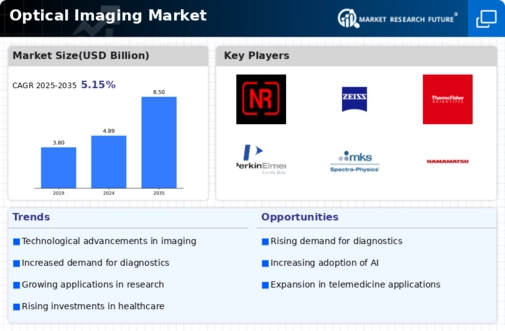
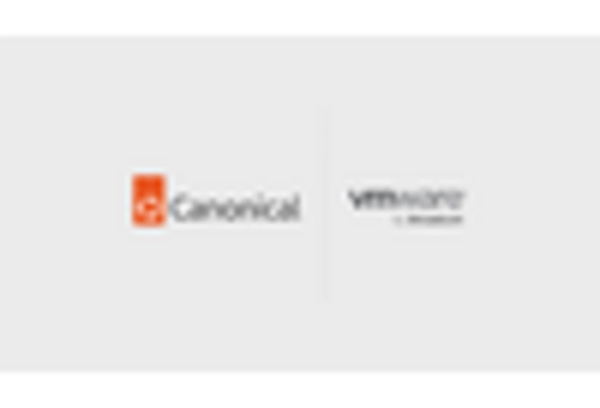
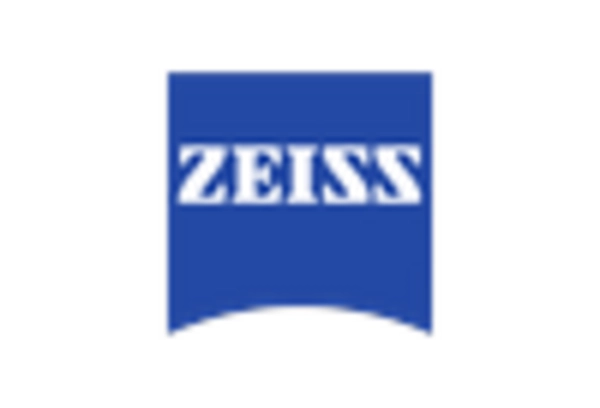
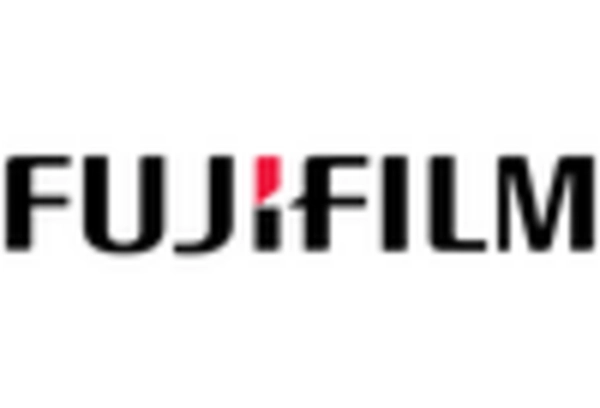
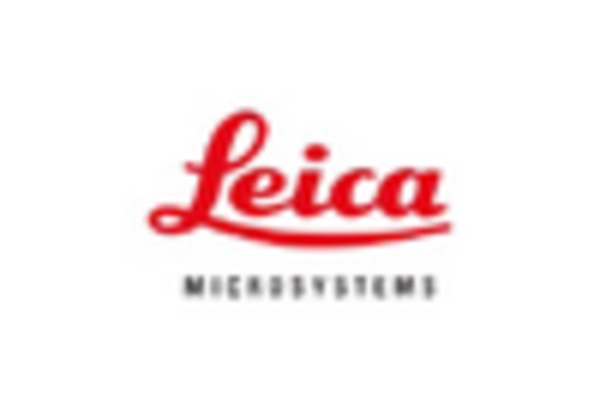
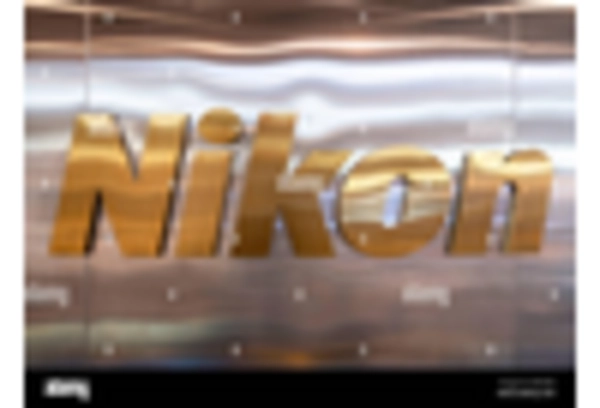
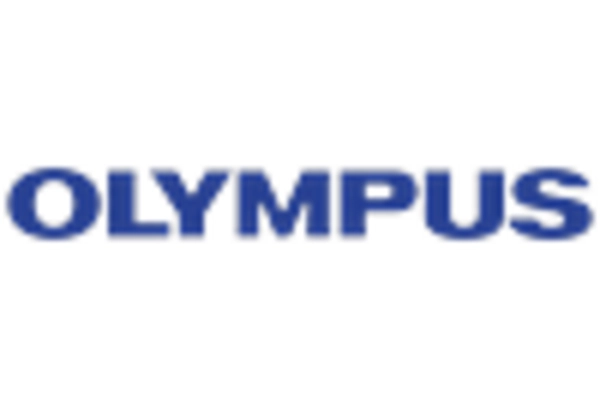









Leave a Comment